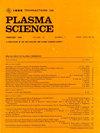利用氧化锌和TMDCs异质结构检测结核分枝杆菌的金属层基SPR生物传感器
IF 1.5
4区 物理与天体物理
Q3 PHYSICS, FLUIDS & PLASMAS
引用次数: 0
摘要
本文首次提出了三种基于Kretschmann结构的新型表面等离子体共振(SPR)传感器,用于结核分枝杆菌(TBs)检测。优化后的传感器结构为:传感器1:BK7/Ag (55 nm)/ZnO (15 nm)/黑磷(BP) (0.53 nm),传感器2:BK7/Au (50 nm)/ZnO (5 nm)/BP ($5\ × 0.53$ nm),传感器3:BK7/Ag (55 nm)/ZnO (15 nm)/BlueP/过渡金属二硫族化合物(TMDCs)(0.75或0.78 nm)。在检测过程中,取了10个样品,并测量了它们的折射率。在633 nm波长下,利用传递矩阵法和角度询问技术分析了传感器的性能。首先,通过观察金属层、ZnO和TMDC的最小反射率和灵敏度的性能来证明其厚度优化。结果表明,传感器1的灵敏度为348.18°/RIU,质量因子(QF)为$154.75~{\text {RIU}}^{-1}$,检测精度(DA)为3.40,检测限(LOD)为$3.48 \times {{10}}^{-6}$;传感器2达到274.09°/RIU, QF为49.03~{\text {RIU}}^{-1}$, DA为1.08,LOD为3.89\times {{10}}^{-6}$;传感器3的灵敏度为331.36°/RIU, QF为$220.91~{\text {RIU}}^{-1}$, DA为4.86,LOD为$3.50\times{10}^{-6}$。将这些创新的SPR传感器的性能与最近发布的生物医学应用领域的研究进行详细比较,证实了它们的出色性能。本文章由计算机程序翻译,如有差异,请以英文原文为准。
Metallic Layer-Based SPR Biosensor for Mycobacterium Tuberculosis Detection Employing Zinc Oxide and TMDCs Heterostructure
This article proposes three novel surface plasmon resonance (SPR) sensors designed on the basis of a Kretschmann configuration for mycobacterium tuberculosis (TBs) detection for the first time. The optimized sensor structures are sensor 1: BK7/Ag (55 nm)/ZnO (15 nm)/black phosphorus (BP) (0.53 nm), sensor 2: BK7/Au (50 nm)/ZnO (5 nm)/BP ( $5\times 0.53$ nm), and sensor 3:BK7/Ag (55 nm)/ZnO (15 nm)/BlueP/transition metal dichalcogenides (TMDCs) (0.75 or 0.78 nm). For the detection process, ten samples are taken with their refractive indices. This work analyzes the sensor’s performance by exploiting the transfer matrix method with the help of the angular interrogation technique at a wavelength of 633 nm. Initially, the thickness optimization of the metallic layer, ZnO, and TMDC is shown by observing the performance of minimum reflectance and sensitivity. Results declare that sensor 1 achieves sensitivity of 348.18°/RIU, quality factor (QF) of $154.75~{\text {RIU}}^{-1}$ , detection accuracy (DA) of 3.40, and limit of detection (LOD) of $3.48 \times {{10}}^{-6}$ ; sensor 2 attains 274.09°/RIU, QF of $49.03~{\text {RIU}}^{-1}$ , DA of 1.08, and LOD of $3.89\times {{10}}^{-6}$ ; sensor 3 accomplishes sensitivity of 331.36°/RIU, QF of $220.91~{\text {RIU}}^{-1}$ , DA of 4.86, and LOD of $3.50\times {10}^{-6}$ . A detailed comparison of these innovative SPR sensors’ performance to recently released studies in the field of biomedical applications confirms their outstanding performance.
求助全文
通过发布文献求助,成功后即可免费获取论文全文。
去求助
来源期刊

IEEE Transactions on Plasma Science
物理-物理:流体与等离子体
CiteScore
3.00
自引率
20.00%
发文量
538
审稿时长
3.8 months
期刊介绍:
The scope covers all aspects of the theory and application of plasma science. It includes the following areas: magnetohydrodynamics; thermionics and plasma diodes; basic plasma phenomena; gaseous electronics; microwave/plasma interaction; electron, ion, and plasma sources; space plasmas; intense electron and ion beams; laser-plasma interactions; plasma diagnostics; plasma chemistry and processing; solid-state plasmas; plasma heating; plasma for controlled fusion research; high energy density plasmas; industrial/commercial applications of plasma physics; plasma waves and instabilities; and high power microwave and submillimeter wave generation.
 求助内容:
求助内容: 应助结果提醒方式:
应助结果提醒方式:


